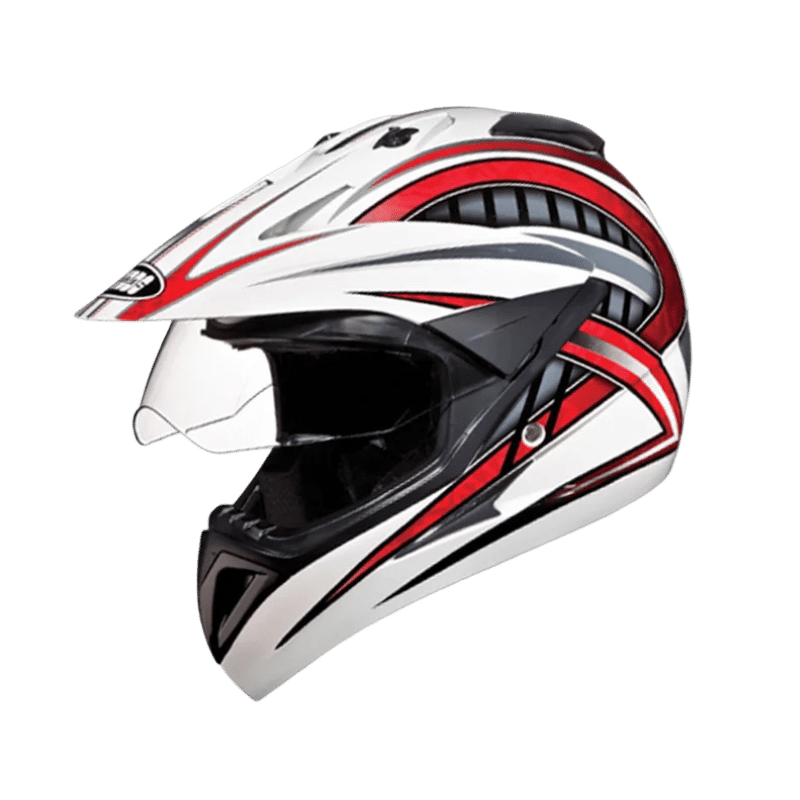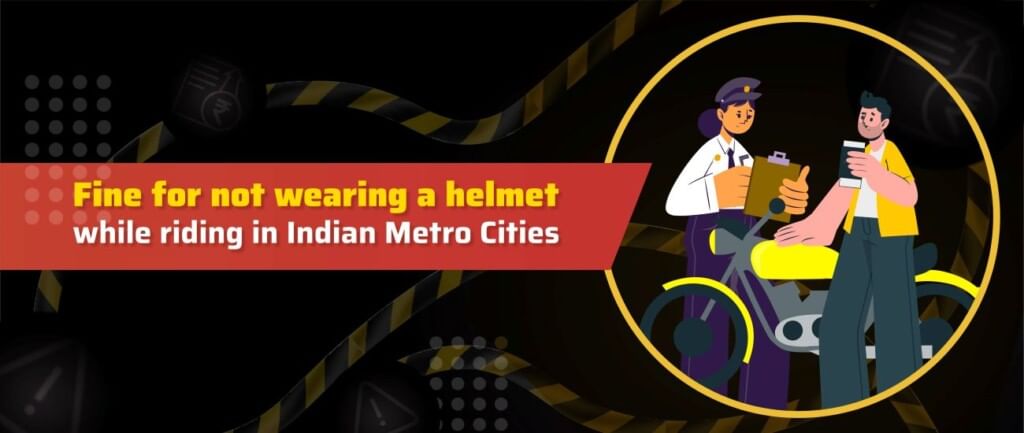India was witness to 53 road accidents per hour which resulted in 19 deaths every hour during the year 2022 according to a report released by The Ministry of Road Transport and Highway. Furthermore, the same year recorded the deaths of 52,000+ people due to not wearing a helmet.
In the bustling streets of India, the decision to wear a helmet while riding a two-wheeler extends far beyond personal choice; it’s a matter of life and death. The consequences of neglecting this safety measure are severe, impacting not only the individual but also their loved ones. In this blog, we attempt to navigate through the intricate web of laws governing helmet usage, understanding the legal ramifications for those who choose to disregard this crucial safety protocol. Join us as we advocate for a culture where the helmet is not just an accessory but a shield against the harsh realities of the Indian roads.
Why is a helmet needed?
A helmet is a vital piece of equipment to have if you own or ride a two-wheeler. Apart from protecting you from any possible head trauma if caught in an accident, wearing a helmet also provides you with several other benefits. Here are a few:
Provides protection to the eyes
Helmets come with a windshield that protects your eyes from a variety of risk particles entering them while riding a two-wheeler. The shield keeps away any possible debris, strong pressure from the wind, dust, and the strong headlights of the vehicles from the opposite side. For safety, you must always purchase a full-face helmet.
Enhanced Control
A helmet will ensure that your attention is strictly on the road and reduces the chances of distraction. The enhanced attention on the road will further decrease the chances of you getting into an accident.
Ear Protection
The strong winds and blaring horns of the other cars can surely be major distractions while riding on Indian roads. In such scenarios, a full-face helmet will not give complete protection to your ears thereby reducing the distraction elements.
Forces of Nature
Helmets are also designed to protect your head while riding through a heavy downpour in the rainy seasons or from the scorching heat of the sun in the summers.
Head Injuries
Designed to keep your head safe, a full-face helmet works as an excellent barrier between your head and the road if you are subjected to an accident. This eliminates the risk of fatal brain injuries and facial injuries as well. They also reduce the risk of internal trauma to the head.
Because the law says so
Finally, wearing a helmet is absolutely necessary while riding a two-wheeler in the country. Failing to comply with the rule will attract heavy fines and punishments that will definitely not be easy on the pocket.
What is Law about wearing a Helmet?
The Motor Vehicles Act of 1988 states that individuals must wear a helmet if driving or riding a two-wheeler on the road. Refusing to comply with the laws will attract a fine of up to Rs.1000 or even lead to imprisonment.
Furthermore, this law underwent an amendment in 2013 which brought out an extensive list of rules to add to the earlier one. Section 129, under the new amendment, states that the helmets worn should be of good quality and both driver and pillion riders should wear helmets with straps to ensure that it doesn’t fall off. Furthermore, anyone found not wearing a helmet will be fined Rs. 1000 and may also be at risk of their driver’s license being canceled for 3 months as per section 194D. People of the Sikh community are exempted from this law.
The law is not only restricted to the riders and the drivers but also takes into account two-wheeler manufacturers as well. Two-wheeler manufacturers have to provide an individual with two helmets for the driver and the pillion rider at the time of the purchase of a two-wheeler. It is also important to ensure that the size and quality of the helmet are appropriate to mitigate the risk of head injuries.
How much fine does one have to pay for not wearing a helmet?
Here is how different cities in the country will burn a hole in your pocket if you don’t comply with the rules:
Fine for not wearing a helmet in Mumbai, Maharashtra
1895 accidents took place in Mumbai during the year 2022 according to the annual report released by the Ministry of Road Transport and Highways. Out of these, 702 accidents were that of two-wheelers. According to an article in The Indian Express, the Mumbai Traffic Police has made it mandatory for both the driver and the pillion rider to wear a helmet. Not complying with the laws will lead to a fine of Rs. 500 if it’s your first offense. Repeated offenses will attract a fine of up to Rs. 1500 and suspension of your license for 3 months.
Fine for not wearing a helmet in Delhi
According to an article in The Indian Express, the first three months of 2023 itself recorded as many as 1,74,281 challans which is more than 1,14,908 challans recorded in the entirety of last year. Failing to wear a helmet in Delhi will lead to a fine of Rs. 1000 and/or suspension of your driver’s licence for 3 months.
Fine for not wearing Helmet in Chennai, Tamil Nadu
An article from September 2023 in the Times of India stated that there were only 11 deaths in Chennai that happened due to not wearing a helmet in 2023. Driving without a helmet in Chennai earlier attracted a fine of Rs.100 but it has been increased to Rs. 1000 and the suspension of your licence for 3 months according to DT Next. It is believed that the increase in the fine and the awareness spread by the traffic police in the region are the major reasons behind the decrease in deaths due to not wearing helmets.
Fine for not wearing a helmet in Kolkata, West Bengal
537 accidents involved two-wheelers out of the 1948 accidents that took place in Kolkata in 2022 according to the report released by the Ministry of Road Transport and Highways. As per the latest amendments in the Motor Vehicles Act 2019, the fine for not wearing a helmet is Rs. 1000 in West Bengal for both the driver and the pillion rider. Furthermore, wearing a helmet that does not have the ISI mark will lead to a fine of Rs. 500.
Fine for Not wearing Helmet in Bangalore, Karnataka
The fine for not wearing a helmet in Karnataka is Rs.500. The law is supervised by installing CCTV cameras across the city, therefore, if a rider passes through multiple points (e.g. 4 points) without a helmet, they will have to pay the fine for each passing (i.e Rs. 2000). According to an article published by The Times of India, 75% of the victims who died in road accidents had their helmets on. This indicates how a majority of the population wears helmets just to save themselves from the fine. One should always wear a good quality helmet that is approved by the government-regulated authorities.
Fine for Not wearing Helmet in Hyderabad, Telangana
In a very heartwarming gesture extended by the Hyderabad police, when the amendments were made to the Motor Vehicles Act, the traffic police team distributed good quality helmets among the citizens who violated the rule. This was done after a counseling session to increase awareness regarding the importance of wearing a helmet. If it is your first offense in failing to comply with the helmet rule in Hyderabad, you will attract a fine of Rs.100 and if it is a second-time offense, the fine is Rs. 300.
Fine for Not wearing a Helmet in Ahmedabad, Gujrat
488 people were killed in 1711 accidents that happened in Ahmedabad in 2022. This is not only alarming but also deeply saddening to understand that a major proportion of these accidents and deaths could have been avoided easily. The fine for driving without a helmet in Ahmedabad, Gujarat ranges from Rs. 500 to Rs. 1000 decided based on the frequency of the offence.
Fine for Not wearing Helmet in Jaipur, Rajasthan
An article from the Times of India from June stated that six months into the year, the traffic police fined over 37,771 challans in 2023. If you are caught driving or riding a two-wheeler in Jaipur without a helmet, you will get a fine of Rs.1000.
Conclusion
We must remember that the laws in place are curated with the sole purpose of safeguarding the citizens of the nation from any possible injury inflicted while driving or riding on the roads. Being the home to the largest population in the world, driving on the Indian roads is certainly not an easy task. Next time you set off to ride or drive a two-wheeler, make sure you have a helmet secured on the head.
 Wishlist
Wishlist
 Track Order
Track Order
























 STUDDS Accessories
STUDDS Accessories  10/02/2024
10/02/2024